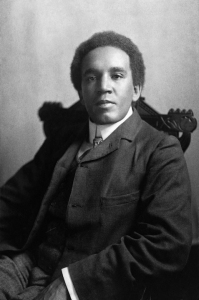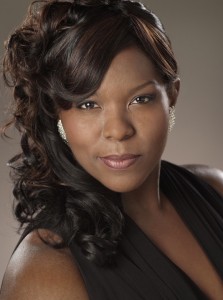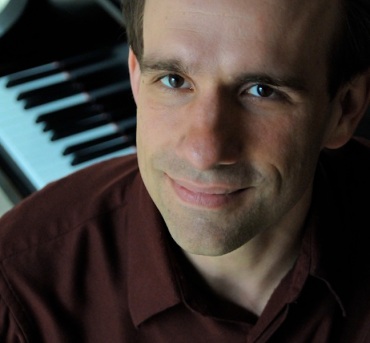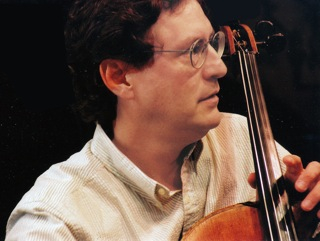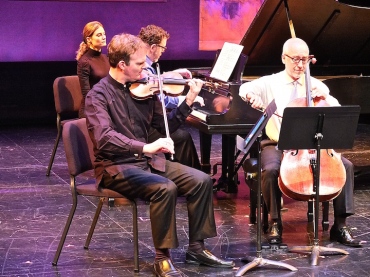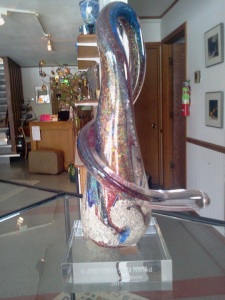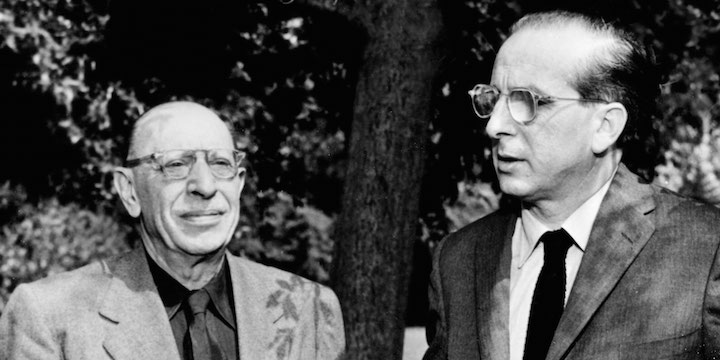The Well-Tempered Ear
Classical music: Does movie music qualify as classical music? Edgewood Chamber Orchestra concert this afternoon has been CANCELLED
4 Comments
ALERT: The concert by Edgewood Chamber Orchestra scheduled for 2:30 p.m. today — Sunday, Feb. 26 — has been CANCELLED. The cancellation was caused by a heating issue in the performance venue. The Chamber Orchestra’s season will continue with its next performance on Sunday, April 23, 2017.
By Jacob Stockinger
The Oscars (below) will be given out this Sunday night at 7:30 p.m. CST on ABC-TV.
Around the nation and the world, more and more symphony orchestras and chamber music groups are turning to performing movie music to attract new audiences — and to explore new repertoire.
And that includes the Madison Symphony Orchestra.
Two seasons ago, acclaimed British violinist Daniel Hope soloed with the MSO to explore movie scores by exiled European composers including Franz Waxman, Miklos Rozsa and Erich Wolfgang Korngold.
This past fall, the MSO put the Chaconne from the film “The Red Violin,” composer by John Corigliano, on the opening program of this season. And this summer, the MSO will perform music by John Williams used in the Harry Potter films.
This morning from 10 a.m. until noon, Wisconsin Public Radio will use the listener’s choice program “Classics By Request” to air its annual Salute to the Oscars that includes past film scores and those up for Academy Awards this year.
So this seems a great time to raise the question: “Do film scores qualify as classical music”?
The question was recently debated for Gramophone magazine by the critic Jed Distler and two distinguished contemporary composers who have written for the concert hall and for Hollywood: Philip Glass (below top) and John Corigliano (below bottom).
It is a fascinating discussion that may surprise you. One great crossover example that The Ear loves is the String Quartet No. 3 by Philip Glass, which is based on the same composer’s full score for the film”Mishima.” (You can hear the last movement in the YouTube video at the bottom.)
Here is a link to that discussion:
https://www.gramophone.co.uk/feature/debate-when-is-film-music-classical
Don’t forget to leave your favorite movie score and what you think about movie music and classical music in the COMMENTS section.
The Ear wants to hear.
Tags: ABC, Academy Award, Arts, audience, Britain, British, chaconne, Classical music, Compact Disc, composer, concert hall, concerto, Daniel Hope, English, Erich Wolfgang Korngold, fall, film, Franz Waxman, Gramophone (magazine), Harry Pottter, Hollywood, Jacob Stockinger, Jed Distler, John Corigliano, John Williams, Madison, Madison Symphony Orchestra, Miklos Rozsa, Mishima, movie, Music, nation, Orchestra, Oscar, Philip Glass, Red Violin, repertoire, salute, score, Season, soundtrack, String quartet, summer, symphony, Television, TV, UK, United Kingdom, United States, University of Wisconsin-Madison School of Music, University of Wisconsin–Madison, Violin, Wisconsin, wisconsin public radio, YouTube
Classical music: The Bach Dancing and Dynamite Society will perform a FREE concert this Sunday afternoon to help bring neglected Jewish music “out of the shadows” of history. Part 2 of 2.
5 Comments
By Jacob Stockinger
The Ear’s friends at the University of Wisconsin-Madison School of Music and the Bach Dancing and Dynamite Society write:
The U.S. component of a major international research project, “Performing the Jewish Archive,” led by the University of Leeds, in England, has attracted significant funding to shine new light on forgotten works by Jewish artists.
The University of Wisconsin–Madison and the City of Madison are uniquely situated as the sole hosts for the global project’s performance events within the United States; one of the premier public research-intensive universities in the world, located in a community that lives and breathes diverse arts, while striving for social change.
Here, in Madison, under the leadership of Teryl Dobbs, Chair of Music Education at the UW-Madison, “Out of the Shadows: Rediscovering Jewish Music, Literature and Theater” will be a full-day event held on this Sunday, August 30, 2015.
Local partners include the UW-Madison School of Music, Mosse-Weinstein Center for Jewish Studies, the Mayrent Institute for Yiddish Culture, and the Arts Institute at UW-Madison; and the Bach Dancing andDynamite Society.
Yesterday The Ear posted the schedule of all FREE events.
Here is a link to that post:
Today’s post focuses on the classical music in the event:
The Ear’s friend Jeffrey Sykes of the Bach Dancing and Dynamite Society writes:
The Bach Dancing and Dynamite Society is proud to partner with Performing the Jewish Archive’s “Out of the Shadows” event by performing neglected and suppressed Jewish music from the early 20th Century.
The FREE concert will be held this Sunday 2:30-4:30 p.m. in the Atrium Auditorium of the First Unitarian Society, 900 University Bay Drive.
The program includes music from two composers who died at Auschwitz. Erwin Schulhoff’s flute sonata is a passionate mix of impressionism and jazz. Dick Kattenburg’s quartet for flute, violin, cello and piano is an irrepressible romp full of Gershwin-esque melodies and harmonies.
Robert Kahn (below) is a composer from an earlier generation whose work was suppressed by the Nazis. We perform his gorgeous song cycle “Jungbrunnen” (The Fountain of Youth) for soprano, violin, cello and piano.
The program concludes with two works by the Viennese wunderkind Erich Wolfgang Korngold (below). Already well-known in Austria, Korngold had begun to compose music for Hollywood movies. He was working California in 1938 when the Anschluss took place, and he never returned to his homeland.
We begin with three beautiful songs he composed for his mother and continue with his Suite for piano left-hand, two violins and cello based on those songs. A thrilling and important composition, the Suite was written for the Austrian pianist Paul Wittgenstein, who had lost his right arm in World War I.
Adds BDDS flutist Stephanie Jutt:
Dutch composer Dick Kattenburg (1919-1944, below) barely got started before his career and his life ended at Auschwitz at age 24. A supremely gifted young composer, bursting with originality and ingenuity, his love of jazz and the popular idioms of the day make his music irresistible – by turns a bit of Stravinsky, a bit of Wizard of Oz, a bit of Duke Ellington. His two dozen complete works were hidden in the attic where his mother had kept them, and were discovered by his sister, Daisy.
The music of Czech composer Erwin Schulhoff (1894-1942, below) has become widely known over the last 20 years. Denounced as “Entartete Musik” (degenerate music) by the Nazis, he died in Wülzburg concentration camp. During the 30 years of his active career he wrote sonatas, quartets, sextets, jazz piano pieces, stage music, an opera, eight symphonies, and at least one oratorio.
Schulhoff, like Kattenburg, also fell in love with American jazz, and his flute sonata of 1927 reflects the infectious American rhythmic vitality with his great interest in the traditional music of Czechoslovakia.
Bach Dancing and Dynamite Society performers are: Emily Birsan, soprano; Stephanie Jutt, flute; Parry Karp, cello; Leanne League, violin; Axel Strauss, violin; and Jeffrey Sykes, piano.
PROGRAM
Erwin Schulhoff (1894-1942): Flute Sonata (1928). Jutt, Sykes
Robert Kahn (1865-1951): Seven Songs from Jungbrunnen, op. 46, for soprano and piano trio (1906). Birsan, League, Karp, Sykes
Dick Kattenburg: Quartet for flute, violin, cello and piano. Jutt, Strauss, Karp, Sykes.
Intermission
Erich Wolfgang Korngold (1897-1957): Three Songs, op. 22, for soprano and piano (1930). Birsan, Sykes
Erich Wolfgang Korngold (1897-1957): Suite, op. 23, for piano left hand, two violins, and cello (1930). Strauss, League, Karp, Sykes
For more about the performers, visit bachdancinganddynamite.org.
Here are biographies of the performers:
Founding Artistic Director STEPHANIE JUTT (below) is professor of flute at the University of Wisconsin-Madison and principal flute of the Madison Symphony Orchestra. She is a winner of the International Pro Musicis Competition.
Founding Artistic Director and pianist JEFFREY SYKES (below) is a faculty member of the University of California-Berkeley. He is a member of the San Francisco Piano Trio.
Soprano EMILY BIRSAN (below) has completed her third year as a member of the Patrick G. and Shirley W. Ryan Opera Center at the Lyric Opera of Chicago. A graduate of the University of Wisconsin-Madison School of Music, she is appearing with the Boston Lyric Opera this year.
Cellist PARRY KARP (bel0w) is artist-in-residence and professor of chamber music and cello at the University of Wisconsin-Madison. He has been cellist of the Pro Arte Quartet for the past 37 years.
Violinist LEANNE KELSO LEAGUE (below) is assistant concertmaster of the Wisconsin Chamber Orchestra, and associate concertmaster of the Madison Symphony Orchestra. She also teaches at the University of Wisconsin-Whitewater and is a member of the Ancora String Quartet.
Violinist AXEL STRAUSS (below), winner of the International Naumburg Award, is professor of violin at the Schulich School of Music of McGill University in Montreal. He is also a member of the San Francisco Piano Trio.
Tags: Ancora Quartet, Arts, Auschwitz, Austria, Bach Dancing and Dynamite Society, California, Cello, Chamber music, Classical music, concentration camp, death camp, Dick Kattenburg, Duke Ellington, Erich Wolfgang Korngold, Erwin Schulhoff, flute, Gershwin, Hitler, Hollywood, Holocaust, Impressionism, Jacob Stockinger, Jazz, Jewish music, Madison, Madison Symphony Orchestra, Music, Nazi, Orchestra, Piano, Robert Kahn, soprano, Stravinsky, United States, University of Wisconsin-Madison School of Music, University of Wisconsin–Madison, Vienna, Violin, vocal music, Wisconsin, Wisconsin Chamber Orchestra, YouTube
Classical music education: WYSO honors James and Geri Grine with the Rabin Youth Arts Award for Youth Arts Supporters. Plus, the final performance of “Exiled in Hollywood” by the Madison Symphony Orchestra is TODAY at 2:30 p.m.
3 Comments
ALERT: This afternoon at 2:30 p.m. in Overture Hall is the last performance of “Exiled in Hollywood” with British violin soloist Daniel Hope (below) and John DeMain conducting the Madison Symphony Orchestra. The music, composed by refugees from Nazi Europe, is by Erich Wolfgang Korngold, Miklos Rozsa and Franz Waxman.
Here is a link to my Q&A with Daniel Hope:
And here is a link to a rave review by Greg Hettmansberger for his Madison Magazine blog “Classically Speaking”:
By Jacob Stockinger
The Ear has received the following news from the office of the Wisconsin Youth Symphony Orchestras (WYSO):
The Wisconsin Youth Symphony Orchestras (WYSO) Board of Directors is pleased to announce the 2015 Rabin Youth Arts Award recipients.
They are James and Geri Grine, who will receive the award in the category of Artistic Achievement. The award is a glass sculpture (below) designed and made by artist Colleen Ott of Spring Green. It will be presented at state Arts Day on this Wednesday, March 11, 2015 at the downtown Central Branch of the Madison Public Library.
Deserving individuals and organizations from across the state were nominated for their support of youth arts across all disciplines.
Jim and Geri Grine have been fervent supporters of the arts in Oshkosh and throughout Wisconsin. Through their careers as musicians, conductors, teachers and arts administrators, the Grines have promoted and expanded performing arts opportunities for youth in Oshkosh and the state of Wisconsin.
Geri Grine (below) has been a long-time orchestra director and music teacher at both Oshkosh high schools. She has been the conductor and Musical Director of the Oshkosh Youth Symphony Orchestra for 28 years. Geri created the Oshkosh Youth Symphony’s Philharmonia Orchestra in 2008. She has sponsored several hands-on artist residencies for local high school students as a board member for Project SOAR.
Geri also founded the Suzuki program at the University of Wisconsin-Oshkosh. From 1996 to 2006, Geri built a Suzuki string program in her native Hawaii. This would be become the first string program on the Hawaiian island of Maui.
Since 2008, Jim Grine (below) has served as the Volunteer Executive Director of the Oshkosh Symphony Orchestra. He has been instrumental in raising funds to support the symphony’s Art and Music Synergy Programs, which has led to several collaborations between local arts organizations. Under Jim, the Oshkosh Symphony Orchestra devotes one-third of its annual income to supporting the Oshkosh Youth Symphony Orchestra.
Jim was also instrumental in the creation of the Water City Chamber Orchestra which performs an annual concert for third graders in the Oshkosh School District.
The Wisconsin Youth Symphony Orchestras, located in Madison, Wisconsin, presents the Rabin Youth Arts Awards in honor of their founding conductor, Marvin Rabin (below), as a means to honor those who follow in his footsteps. The awards are a forum for promoting quality youth arts programs and honoring those who work diligently to provide arts opportunities for children throughout Wisconsin. They also serve as a means to elevate awareness in our community about the importance of arts education for all children.
Now celebrating its 49th season, WYSO membership has included more than 5,000 young musicians from more than 100 communities in southern Wisconsin. WYSO, currently under the artistic direction of James Smith, includes three full orchestras, a string orchestra, a chamber music program, a percussion ensemble, a harp ensemble and a brass choir program. For more information, visit www.wyso.music.wisc.edu
Tags: Academy Award, Arts, Arts Day, arts education, award, Board of Directors, brass, Captain Blood (1935 film), Chamber music, chamber orchestra, Classical music, Daniel Hope, Erich Wolfgang Korngold, Franz Waxman, Greg Hettmansberger, harp, Hawaii, Hollywood, Jacob Stockinger, John DeMain, Madison Magazine, Madison Symphony Orchestra, Marvin Rabin, Maui, Miklos Rozsa, Music, Music education, Nazi, Orchestra, percussion, Project SOAR, strings, Suzuki, University of Wisconsin-Madison School of Music, University of Wisconsin–Madison, University of Wisconsin–Oshkosh, Violin, Wisconsin, WYSO, Youth Orchestra
Classical music: Violinist Daniel Hope explores the music created by composers who emigrated from Nazi Europe to Hollywood and wrote film scores. He performs that music with the Madison Symphony Orchestra this weekend.
6 Comments
By Jacob Stockinger
British violinist Daniel Hope (below) is a man on a mission.
Hope wants to foster the public’s appreciation of the composers who had to flee from Nazi Europe during World War II and who ended up exiled in Hollywood, where they composed film scores. They ended up creating the “Hollywood sound” and often won Oscars or Academy Awards, but recognition as serious concert composers usually eluded them.
Until recently.
Lately, a rediscovery of their merits has been taking place, and Hope will explore that legacy with the Madison Symphony Orchestra and its longtime music director and conductor John DeMain.
Performances are in Overture Hall on Friday night at 7:30 p.m.; Saturday at 8 p.m.; and Sunday afternoon at 2:30 p.m.
The program for “Composers in Exile: Creating the Hollywood Sound” includes the Violin Concerto and Suite from “Captain Blood” by Erich Wolfgang Korngold; the Sinfonietta for Strings and Tympani, and the score to “Taras Bulba” by Franz Waxman, who also founded the Los Angeles Music Festival in 1947; and the “Theme, Variations and Finale” as well as “The Parade of the Charioteers” and the “Love Theme” from “Ben-Hur” and the “Love Theme” from Alfred Hitchcock’s “Spellbound” by Miklos Rozsa.
Tickets are $16-$84 plus fees for the Overture Center.
For program, information about tickets and links to audio samples, visit: http://madisonsymphony.org/hope
For more about the music, here are the program notes by MSO trombonist Michael Allsen who also teaches at the UW-Whitewater:
http://facstaff.uww.edu/allsenj/MSO/NOTES/1415/6.Mar15.html
The award-winning Daniel Hope, who is busy touring and recording, graciously took time to answer a Q&A for The Ear:
How would you compare in seriousness and quality these “exiled in Hollywood” composers and their music to other well-known 20th-century composers and mainstream modern classical music?
I don’t make comparisons in music. The composers who escaped the Nazis found themselves for the most part in a very different set of circumstances than those for which they were trained. They were incredibly talented and had to adapt quickly.
I think the more interesting question is what would have happened to 20th-century music if countless musicians and composers had not been forced to leave Europe. (Below is a photo of Igor Stravinsky, on the left, and Franz Waxman in Los Angeles, where Waxman founded a music festival in 1947.) The world of music would be a very different place indeed.
Why do you think these composers and this music were kept out of the concert hall for so long? What traits most mark each composer’s style?
In those days, even writing one number for a movie would almost certainly have ruined your reputation as a “serious composer.” It was seen as selling out. The fact that many of these composers were trying to survive, to support their families and to get their relatives out of Europe, was often forgotten — especially after World War II.
But they were also phenomenally talented at what they did. As the son of Miklos Rozsa (below) wrote to me recently, one day these composers may actually be forgiven for writing film music.
In the case of Korngold (below), he was one of the first to really introduce a leitmotif, a recurring theme that followed the character throughout the film. Essentially an operatic composer, Korngold described each film for which he scored as “an opera without singing,” his music no longer passively accompanying the images but actively engaging in dialogue, emotion and presentation. I believe both Korngold and Max Steiner totally changed American film music, also by adding a fin-de-siècle European symphonic grandeur.
How much of their current appeal is cultural interest, human interest or personal stories, or the quality of the music itself?
I think it’s all of the above. But if you look at the symphonic works of some of the composers, Korngold’s and Rosza’s Violin Concertos or Waxman’s oratorio “The Song of Terezin,” you will find music of the highest quality. And let’s not forget, it was Mahler and Richard Strauss who forecast a great future for the young Korngold. (You can hear the lovely second movement of Korngold’s Violin Concerto performed by Hilary Hahn in a popular YouTube video at the bottom.)
What factors explain their revival as concert music? How did you rediscover them and become interested in them? Has a loosening of formal definitions of classical genres helped their revival?
I think both the role and the appeal of film music have changed in today’s society. I had long been aware of this group of émigré musicians.
Next to music, I’ve always had a passion for film, most of all for the movies of “vintage Hollywood,” for me the period beginning with the epic cinematic storytelling of the 1930s. As a young violinist, I was struck as much by the sound of the violin in these movies of the ’30s, ’40s and ’50s. I especially took note of the violinists playing this glorious mood music. To a young boy in London, names like Toscha Seidel, Felix Slatkin, Eudice Shapiro and Louis Kaufman sounded as exotic as the films they embellished.
But then writing for the studio musicians of prewar and postwar Hollywood was a group of astonishing composers, many of whom had escaped the Nazis, and who helped shape what was to become the Hollywood Sound. (Below, y0u can hear excerpts from a sampler from the Deutsche Grammophon CD on which Daniel Hope explores the Hollywood Sound.)
You have recorded this music and performed it many times elsewhere. How do audiences typically respond to it?
Audiences are generally extremely enthusiastic about the music. And many of them are moved or intrigued by the stories of these composers.
Tags: Academy Award, Academy Awards, Alfred Hitchcock, Arts, Ben-Hur, British, choral music, Classical music, concerto, Daniel Hope, Erich Wolfgang Korngold, Europe, Film score, Franz Waxman, Hollywood, Jacob Stockinger, John DeMain, leitmotif, London, Los Angeles, Mahler, Max Steiner, Miklos Rozsa, movie music, Music, Nazi, oratorio, Orchestra, Oscar, Oscars, Overture Center, Richard Strauss, Sinfonietta, Stravinsky, strings, Terezin, tympani, Violin, World War II, YouTube
Classical music: The Madison Symphony Orchestra announces its new 2014-15 season. It includes programs from Bach to Hollywood exiles from Hitler and the Nazis, acclaimed soloists and ticket prices with only modest increases.
2 Comments
By Jacob Stockinger
The Madison Symphony Orchestra (below) has just announced its next season for 2014-15.
It strikes The Ear as both deeply interesting and tightly cohesive, a good blend of sure-fire hits and unknown or rarely heard repertoire. It also features some fine local talent and some unusual repertoire, though, unlike the past several seasons, no new or contemporary music is included. After all, this is a business with seats to fill, not some theoretical exercise in programming.
“You can’t have everything, especially when you are playing only eight concerts,” lamented MSO maestro John DeMain (below, in a photo by Prasad) when he discussed the new season with me.
But, DeMain added, the MSO is exploring doing another Chicago Symphony Orchestra “Beyond the Score” format concert — like this season’s presentation of Antonin Dvorak’s “New World” Symphony, which sold out — probably in January and probably with more than one performance, if they can find a sponsor to front the $50,000 cost. Then he will decide on what work out of more than 20 possibilities would be right.
Concerts take place in Overture Hall in the Overture Center on Friday nights at 7:30 p.m.; Saturday nights at 8 p.m.; and Sunday afternoons at 2:30 p.m.
The deadline for subscriptions renewals and keeping your current seat is May 8.
Here is the official press release that unveils the new season. The Ear also talked at length one-on-one with MSO music director and conductor John DeMain. Since the announcement is long enough for one post, DeMain’s insightful comments will appear a bit later in another post.
MADISON SYMPHONY ORCHESTRA ANNOUNCES 2014-15 SEASON
Maestro John DeMain and the Madison Symphony Orchestra (MSO) will deliver a diverse and exciting season of composers and guest artists for 2014-2015.
Beginning with a September program that focuses on the highly-talented musicians in the orchestra, DeMain will lead the audience through an exhilarating variety of themes and cultures throughout the season. Russia, Scandinavia, and Golden-Age Hollywood are just a few of the sound worlds the MSO will explore, while monumental works central to the orchestra, such as Beethoven’s Ninth Symphony, will anchor the year.
A world-class roster of guest artists has been invited to Madison for the season’s performances, including violinist Sarah Chang, pianist Olga Kern, violinist Daniel Hope, pianist Ingrid Fliter and University of Wisconsin-Madison School of Music pianist Christopher Taylor.
SEPTEMBER 19, 20 and 21, 2014
“Orchestral Splendor,” John DeMain, Conductor
RICHARD STRAUSS, “Also sprach Zarathustra”
FRANK MARTIN, Concerto for Seven Winds
CAMILLE SAINT-SAËNS, Symphony No. 3 (“Organ” Symphony)
German composer Richard Strauss’ Also sprach Zarathustra was once among his least performed works, but it is now firmly established as standard orchestral repertoire. The trumpet theme and thunderous timpani entrance (heard in Stanley Kubrick’s epic film “2001: A Space Odyssey”) are unmistakable.
Swiss composer Frank Martin’s Concerto for Seven Winds was written in 1949. It features seven solo instruments, exploring differences in sonority and expression. The virtuosic and conversational writing in these piece results in a playful, sportive character.
French composer Camille Saint-Saëns’ Symphony No. 3, known also as the “Organ” Symphony, draws on elements of both the conventional symphony and the tone poem. Formally unusual in its own time, yet popular from its conception, the work features virtuosic piano and organ passages and a masterful display of the vast colors possible in the symphony orchestra.
OCTOBER 17, 18 and 19, 2014
“The Russian Spirit” with John DeMain, conductor, and Olga Kern (below), piano
PETER ILYICH TCHAIKOVSKY, Suite from “Swan Lake”
SERGEI RACHMANINOFF, Concerto No. 1 for Piano
DMITRI SHOSTAKOVICH, Symphony No. 6
The Suite from “Swan Lake” tells the magical tale of a young prince enchanted by a swan maiden under the moonlight. Peter Tchaikovsky’s charming work utilizes haunting melodies, captivating waltzes, Russian and Hungarian folk themes, and a Spanish dance.
Sergei Rachmaninoff’s Concerto No. 1 for Piano displays a youthful freshness and an assertive, extroverted personality. Indeed, the composer began this work when he was 17! For audience members who delight in keyboard fireworks, this piece will thrill.
Symphony No. 6 by Dmitri Shostakovich, written as war clouds were gathering in Russia, was quite a contrast to Symphony No. 5. Lopsided movement lengths, a lack of obvious theme, and characters of anxiety and desolation reflect the intriguing political situation of the time, as well as Shostakovich’s own remarkably wide emotional compass.
NOVEMBER 7, 8 and 9, 2014
“Scandinavian Wonders” with John DeMain, conductor, and Sarah Chang (below), violin
EDVARD GRIEG, Lyric Suite
JEAN SIBELIUS, Concerto for Violin
CARL NIELSEN, Symphony No. 4 (“The Inextinguishable”)
Over the course of his long career, Edvard Grieg composed 66 Lyric pieces for piano, strongly rooted in the songs, dances, mythology, and spirit of Norway. He selected four of these fragrant and diverse miniatures for an orchestral suite, premiered in 1906.
“…For…10 years it was my dearest wish to become a great virtuoso.” wrote Finnish composer Jean Sibelius in his diary. Unfortunately the composer never reached great proficiency on the instrument, and his Concerto for Violin, awash in Nordic textures, expresses a melancholic farewell to that childhood dream.
As a philosophical guideline to his often raging Symphony No. 4, Danish composer Carl Nielsen said, “Music is life, and, like life, inextinguishable”. Four interlinked movements of frequently agitated energy lead to a climax of ultimate triumph and grand 19th century symphonic tradition.
DECEMBER 5, 6 and 7, 2014
A Madison Symphony Christmas
With John DeMain, conductor; Alyson Cambridge (below), soprano; Harold Meers, tenor; the Madison Symphony Chorus, Beverly Taylor, director; the Madison Youth Choirs, Michael Ross, artistic director; and the Mt. Zion Gospel Choir, Leotha Stanley, director.
John DeMain and the Madison Symphony don their Santa hats for this signature Christmas celebration. This concert is filled with traditions, from caroling in the lobby with the Madison Symphony Chorus to vocal performances by hundreds of members of Madison’s musical community. Christmas classics are interwoven with enchanting new holiday music. The culminating sing-along is Madison’s unofficial start of the holiday season!
FEBRUARY 13, 14 and 15, 2015
“Fliter Plays Chopin” with John DeMain, conductor, and Ingrid Fliter (below), piano
BENJAMIN BRITTEN, Variations on a Theme by Frank Bridge
FREDERIC CHOPIN, Concerto No. 2 for Piano
ROBERT SCHUMANN, Symphony No. 4
Frank Bridge, one of Benjamin Britten’s earliest composition teachers, was certainly responsible for the surpassing clarity, individuality, and discipline in Britten’s most cherished works. Britten’s “Variations” on Bridge’s theme range from passionate to playful, capturing the heartfelt musical admiration of a pupil for his teacher.
From the moment he arrived in Paris at age 21, Frederic Chopin drew the admiration of both the public and esteemed critics, alike. Concerto No. 2 was in fact his first concerto, displaying the composer’s prolific improvisatory and imaginative style.
In composing Symphony No. 4, Robert Schumann departed significantly from the standard Classical form he previously employed, connecting all four movements with recurring musical ideas–a novel proposition at the time.
MARCH 6, 7 and 8, 2015
“Composers in Exile: Creating the Hollywood Sound” with John DeMain, conductor, and Daniel Hope (below), violin
FRANZ WAXMAN, Sinfonietta for Strings and Timpani Ride of the Cossacks from “Taras Bulba”
MIKLÓS RÓZSA, Theme, Variations and Finale; Parade of the Charioteers from “Ben Hur”; Love Theme from “Ben Hur”; Love Theme from “Spellbound”
ERICH KORNGOLD, Concerto for Violin and the Suite from “Captain Blood”
This unique concert features the works of great classical composers before they fled Nazi persecution and also showcases their later brilliant contributions to Hollywood film scores.
Franz Waxman (below) is responsible for a long list of memorable Hollywood scores, including “The Bride of Frankenstein,” “Dr. Jekyll and Mr. Hyde” and “Rebecca.” His Sinfonietta, written for only strings and timpani, is comprised of three wildly different movements. Waxman also composed the soundtrack for the 1962 epic, “Taras Bulba.” “Ride of the Cossacks” is the exhilarating theme to which Taras and his army gallop to Dubno.
According to Miklos Rózsa (below), his “Theme” was conceived in the manner of a Hungarian folk song, then treated in variations of contrasting feeling, and summarized in a wild and swift finale. The 1934 work earned him his first international success. By the late 1940’s Rózsa was an Oscar-winning, film score composer, and joined the staff of Metro-Goldwyn-Meyer. His thrilling score for the 1959 film “Ben Hur” is one of his lasting achievements, earning him his third and final Oscar.
The Concerto for Violin, written by Erich Wolfgang Korngold (bel0w top) in 1945, perfectly blends the two musical lives of the composer, unapologetic in both its rigorous craftsmanship and its Hollywood charm. “Captain Blood” was a milestone for Korngold, as it was his first fully symphonic movie score. Produced in only three weeks, the music evidences his most professional and imaginative effort.
APRIL 10, 11 and 12, 2015
“Piano Genius” with John DeMain, conductor, and Christopher Taylor (below), piano
JOHANN SEBASTIAN BACH, Concerto No. 4 for Clavier
FRANZ LISZT, Concerto No. 1 for Piano
ANTON BRUCKNER, Symphony No. 7
Concerto No. 4 by Johann Sebastian Bach is part of a set of six concertos, dated to 1738. The piece was originally written for harpsichord and is ripe with movement and ornamentation. Bach’s concertos laid a crucial formal and harmonic groundwork for centuries of composition to follow.
Franz Liszt’s Concerto No. 1 for Piano is more than a century-long leap forward in time. Liszt’s Romantic genius is unabashedly on display, with thick orchestration, cadenzas that range from delicate to thundering, and lush harmonies.
Anton Bruckner was a country man, transplanted into bustling cosmopolitan Vienna, and he and his music were unlikely successes with audiences and critics. His music was said to “compel the element of the divine into our human world”.
MAY 8, 9 and 10, 2015
“Ode to Joy” with John DeMain, conductor; concertmaster Naha Greenholtz (below top), violin; Melody Moore, soprano; Gwendolyn Brown, contralto; Eric Barry, tenor; Morris Robinson (below bottom), bass; and the Madison Symphony Chorus, Beverly Taylor, director.
LEONARD BERNSTEIN, “Serenade” (after Plato’s “Symposium”)
LUDWIG VAN BEETHOVEN, Symphony No. 9 (“Choral”)
Leonard Bernstein’s “Serenade” for violin and orchestra, resulted from a rereading of Plato’s charming dialogue, “The Symposium.” The music dances through a series of inter-related “speakers” at a banquet (Phaedrus, Aristophanes, Erixymachus, Agathon, and Socrates), praising love.
Ludwig van Beethoven’s last and monumental Symphony No. 9 stands apart from his other symphonies by virtue of its humanistic message, enormous scale and organic unity of design. The mammoth fourth movement, operating like a symphony in miniature, is like nothing else in symphonic music. Four soloists, full chorus, the entire orchestra, and the famous “Ode to Joy” theme will conclude the Madison Symphony Orchestra’s season. (You can hear a populist flash mob version of the “Ode to Joy” at the bottom in a popular YouTube video that had almost 4-1/2 million hits.)
Single tickets for individual concerts have increased slightly and are $16 to $84 each, and go on sale Aug. 16. They are available at www.madisonsymphony.org/singletickets and through the Overture Center Box Office at 201 State Street or call the Box Office at (608) 258-4141.
New subscribers can receive savings up to 50%. For more information and to subscribe, visit www.madisonsymphony.org/newsub or call (608) 257-3734.
Groups of 15 or more can save 25% by calling the MSO office at (608) 257-3734. For more information visit, www.madisonsymphony.org/groups
Discounted seats are subject to availability, and discounts may not be combined.
You can also check out the official MSO website announcement of the new season by visiting:
http://www.madisonsymphony.org/14-15
The Madison Symphony Orchestra engages audiences of all ages and backgrounds in live classical music through a full season of concerts with established and emerging soloists of international renown, an organ series that includes free concerts, and widely respected education and community engagement programs. Find more information at www.madisonsymphony.org.
Tags: 2001: A Space Odyssey, Adolf Hitler, Also sprach Zarathustra, Alyson Cambridge, Anton Bruckner, Antonín Dvořák, Arts, Austria, Bach, Beethoven, Benjamin Britten, Bernstein, Beyond the Score, Camille Saint-Saëns, Carl Nielsen, Chicago Symphony Orchestra, Choir, Chopin, chorus, Christmas, Classical music, concerto, conductor, contralto, Denmark, dialogue, Dmitri Shostakovich, Dvorak, Edvard Grieg, Erich Wolfgang Korngold, exiles, Finland, Flash mob, France, Frank Bridge, Frank Martin, Franz Liszt, Franz Waxman, Frédéric Chopin, Germany, gospel, Grieg, Hitler, Ingrid Fliter, Jacob Stockinger, Jean Sibelius, Jew, Jewish, Johann Sebastian Bach, John DeMain, Leonard Bernstein, Liszt, Ludwig van Beethoven, Madison, Madison Symphony Orchestra, Mezzo-soprano, Miklos Rozsa, MSO, Music, New World Symphony, Nielsen, Ninth Symphony, Norway, Ode to Joy, Olga Kern, Orchestra, organ, organ symphony, Overture Center, Peter Tchaikovsky, Piano, Plato, populist, Rachmaninoff, Rachmaninov, Richard Strauss, Robert Schumann, Russia, Santa, Sarah Chang, Scandinavia, Schumann, Sergei Rachmaninoff, Sibelius, soprano, Stanley Kubrick, Switzerland, symphony, Tchaikovsky, tenor, The Inextinguishable, University of Wisconsin-Madison School of Music, University of Wisconsin–Madison, Violin, YouTube
Classical music: NPR explores the music soundtracks for movies that nominated for Academy Awards and could receive an Oscar at tonight’s ceremonies airing on ABC-TV.
4 Comments
By Jacob Stockinger
Oscar would no doubt say that movie soundtracks deserve special attention and serious consideration as art music.
Of course purists will probably argue that movie soundtracks are not really classical music – except in certain cases like Roman Polanski’s “The Pianist,” “Shine,” “Amadeus” and such obvious fare.
And it would be hard to disagree with them.
Perhaps some would say that movies are the real operas of our day, except that the music plays a secondary or tertiary role.
Besides, more and more symphony orchestras are turning to concert programs that feature movie soundtracks, perhaps to attract new and younger audiences.
And radio stations seem to be mixing in and playing more and more movie music on their classical programs.
And more and more composers who aspired to be classical composers but who were forced earn a living in Hollywood –- Erich Wolfgang Korngold (below) comes immediately to mind –- are being increasingly programmed for their classical fare as well as their commercial Hollywood work.
Besides, “crossover” and “fusion” are the key words of the day in the classical music scene, as you can see with the success of Yo-Yo Ma’s Silk Road Project (below top) and the “new tangos” by Astor Piazzolla (below bottom), to name but two examples.
So perhaps it is only natural that, in the run-up to the Academy Awards tonight, NPR and its terrific blog “Deceptive Cadence’ have featured several posts about the music that is featured in nominated movies, especially the story of Alice Herz-Sommer, the late 110-year-old pianist (below, in photo by Yuri Dojc) who survived Auschwitz by playing music, especially the etudes of Frederic Chopin -– and who just died last week. (You can hear her speak and play the piano at the bottom in a popular YouTube video that has almost a million hits.)
The Ear suspects her story, “The Lady in Number 6,” will win the Oscar for short documentary because she was the oldest survivor of the Holocaust and was a testament to the power of music, and therefore of all art and beauty, over evil and adversity. She embodied hope — a cherished value.
Here is a link to her fascinating and detailed obituary in The New York Times:
So as you prepare to watch the live broadcast on ABC-TV tonight starting at 6 p.m. CST (it will also be streamed live), here are links to consider when you think about music and films.
Here is the link to a story about music and documentaries:
http://www.npr.org/2014/02/28/283072030/music-takes-center-stage-in-oscar-nominated-documentaries
Here is an overview of several nominees, including William Butler (below) of Arcade Fire, for Best Score:
http://www.npr.org/2014/02/26/283026146/and-the-oscar-goes-to-mr-star-wars-or-arcade-fire
And here is a link to another story about quiet music — specifically, composer Alexandre Desplat and his score for “Philomena” starring Judi Dench (below) — and how hard it is to compose and perform:
Tags: Academy Award, Alexandre Desplat, Alice Herz Sommer, Arts, Auschwitz, Ástor Piazzolla, Chopin, Classical music, concentration camps, crossover, Dachau, documentary, Erich Wolfgang Korngold, etude, fims, Frédéric Chopin, fusion, Hollywood, Holocaust, Jacob Stockinger, Judi Dench, Movies, Nazi, New York Times, NPR, opera, Orchestra, Oscar, Philomena, Pianist, Piano, Poland, Roman Polanski, Silk Road Ensemble, Silk Road Project, soundtracks, symphony orchestra, Theresienstadt, Yo-Yo Ma, YouTube, Yuri Dojc


